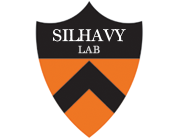Suppressor analysis suggests a multistep, cyclic mechanism for protein secretion in Escherichia coli
Type
The sec/prl gene products catalyze the translocation of precursor proteins from the cytoplasm of Escherichia coli. Recessive, conditionally lethal mutant alleles of these genes (sec mutations) cause a generalized defect in protein secretion; dominant suppressor mutant alleles (prl mutations) restore export of precursor proteins with altered signal sequences. In prl strains, a precursor protein with a defective signal sequence can be selectively targeted to the suppressor gene product. When a precursor LacZ hybrid protein is used, the targeted prl protein is inactivated by the large, toxic hybrid molecule, a result termed suppressor-directed inactivation (SDI). Using SDI, two different secretion-related complexes can be generated: a pretranslocation complex that contains a hybrid protein with an unprocessed signal sequence, and a translocation complex in which the hybrid protein is jammed in transmembrane orientation with the signal sequence cleaved. Additional Sec proteins that are contained within, and thus sequestered by, each of these complexes can be identified when their functional levels are lowered using the conditional lethal sec mutations. Results of this genetic analysis suggest a multistep pathway for protein secretion in which the translocation machinery assembles on demand.

